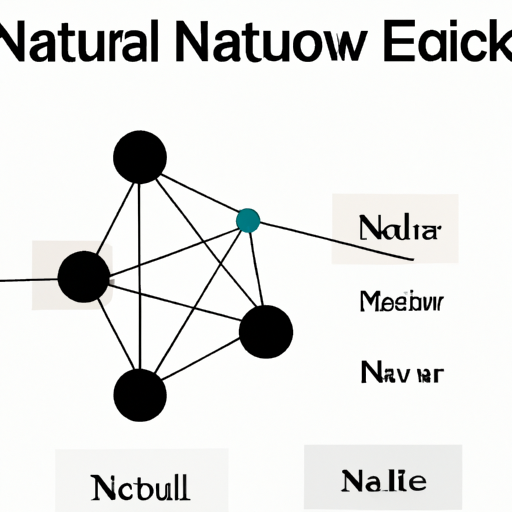-
Table of Contents
“Unlock the power of neural networks with The Complete Guide!”
Introduction
The Complete Guide to Neural Networks is a comprehensive guide to understanding and applying neural networks. It covers the fundamentals of neural networks, from the basics of how they work to the latest advances in deep learning. It also provides practical advice on how to design and implement neural networks for a variety of applications. This guide is intended for anyone interested in learning more about neural networks, from beginners to experts. It provides a comprehensive overview of the field, from the basics of neural networks to the latest advances in deep learning. It also provides practical advice on how to design and implement neural networks for a variety of applications.
Implementing Neural Networks in Real-World Applications
Neural networks are a powerful tool for solving complex problems in a variety of real-world applications. Neural networks are a type of artificial intelligence that is modeled after the human brain and can be used to solve problems that are too complex for traditional computing methods. Neural networks are used in a variety of applications, including image recognition, natural language processing, and autonomous vehicles.
Image recognition is one of the most common applications of neural networks. Image recognition systems use neural networks to identify objects in images. This technology is used in a variety of applications, such as facial recognition, object detection, and medical imaging. Neural networks can also be used to classify images into different categories, such as animals, plants, and vehicles.
Natural language processing is another application of neural networks. Natural language processing systems use neural networks to understand and interpret natural language. This technology is used in a variety of applications, such as voice recognition, text-to-speech, and machine translation. Neural networks can also be used to generate natural language responses to user queries.
Autonomous vehicles are another application of neural networks. Autonomous vehicles use neural networks to navigate their environment and make decisions. This technology is used in a variety of applications, such as self-driving cars, drones, and robots. Neural networks can also be used to detect obstacles and plan routes.
Neural networks are a powerful tool for solving complex problems in a variety of real-world applications. Image recognition, natural language processing, and autonomous vehicles are just a few of the applications of neural networks. As technology continues to advance, neural networks will become even more powerful and will be used in a variety of new and exciting applications.
Understanding the Architecture of Neural Networks
Neural networks are a type of artificial intelligence that is modeled after the human brain. They are composed of interconnected layers of neurons, which are the basic building blocks of the network. Each neuron is connected to other neurons in the network, and the connections between them are weighted. This means that the strength of the connection between two neurons is determined by the weight assigned to it.
The architecture of a neural network is composed of three main components: the input layer, the hidden layers, and the output layer. The input layer is responsible for receiving data from the outside world. This data is then passed through the hidden layers, which are composed of neurons that process the data and generate a response. Finally, the output layer produces the desired output based on the data that was processed in the hidden layers.
The architecture of a neural network is highly customizable, and can be tailored to the specific task that it is designed to perform. For example, a neural network designed to recognize images may have more layers than one designed to recognize text. Additionally, the number of neurons in each layer can be adjusted to increase or decrease the complexity of the network.
The architecture of a neural network is an important factor in determining its performance. By understanding the architecture of a neural network, it is possible to optimize its performance and ensure that it is able to accurately and efficiently process data.
Exploring Different Types of Neural Networks
Neural networks are a type of artificial intelligence that is modeled after the human brain. They are composed of interconnected nodes, or neurons, that process and transmit information. Neural networks are used in a variety of applications, including image recognition, natural language processing, and robotics.
There are several different types of neural networks, each with its own unique characteristics and capabilities. The most common types of neural networks are feedforward, recurrent, convolutional, and generative adversarial networks.
Feedforward neural networks are the simplest type of neural network. They are composed of layers of neurons that are connected in a linear fashion. Information is passed from one layer to the next until it reaches the output layer. This type of neural network is used for classification tasks, such as recognizing images or predicting stock prices.
Recurrent neural networks are similar to feedforward networks, but they have the ability to remember information from previous inputs. This allows them to process sequences of data, such as text or audio. Recurrent neural networks are used for tasks such as language translation and speech recognition.
Convolutional neural networks are used for image recognition and classification tasks. They are composed of layers of neurons that are arranged in a grid-like structure. Each layer is responsible for detecting different features in an image, such as edges or shapes.
Generative adversarial networks are a type of neural network that is used for generating new data. They are composed of two networks, a generator and a discriminator. The generator network creates new data, while the discriminator network evaluates the data and determines whether it is real or fake. Generative adversarial networks are used for tasks such as image generation and text generation.
Each type of neural network has its own strengths and weaknesses, and they can be used in combination to create powerful AI systems. By understanding the different types of neural networks, developers can create more effective AI systems that can solve complex problems.
The Benefits of Using Neural Networks in Machine Learning
Neural networks are a powerful tool for machine learning, and they have become increasingly popular in recent years. Neural networks are a type of artificial intelligence that is modeled after the human brain, and they are used to solve complex problems. Neural networks are capable of learning from data and making decisions based on that data. This makes them ideal for machine learning applications.
The primary benefit of using neural networks in machine learning is their ability to learn from data. Neural networks are able to identify patterns in data and use those patterns to make predictions. This allows them to make decisions without being explicitly programmed to do so. This makes them much more efficient than traditional machine learning algorithms, which require a lot of manual programming.
Another benefit of using neural networks in machine learning is their ability to generalize. Neural networks are able to take the data they have learned from and apply it to new data sets. This allows them to make predictions on data that they have not seen before. This makes them much more robust than traditional machine learning algorithms, which can only make predictions on data that they have seen before.
Finally, neural networks are able to handle large amounts of data. Traditional machine learning algorithms can become overwhelmed when presented with large amounts of data. Neural networks, however, are able to process large amounts of data quickly and accurately. This makes them ideal for applications that require large amounts of data to be processed.
In conclusion, neural networks are a powerful tool for machine learning. They are able to learn from data, generalize, and handle large amounts of data. This makes them ideal for a variety of machine learning applications.
What is a Neural Network and How Does it Work?
A neural network is a type of artificial intelligence (AI) system that is modeled after the human brain. It is composed of interconnected nodes, or neurons, that process and transmit information. Neural networks are used to solve complex problems that are difficult for traditional computing systems to solve.
Neural networks are composed of layers of neurons that are connected to each other. Each neuron is connected to multiple other neurons, and each connection has a weight associated with it. The weights are adjusted during the training process to optimize the network’s performance.
The neurons in a neural network are organized into layers. The input layer receives data from the outside world, and the output layer produces the desired result. The hidden layers are in between the input and output layers and are responsible for processing the data.
The neurons in a neural network process information by passing it through the network. Each neuron takes the input from the previous layer and multiplies it by its weight. The result is then passed to the next layer. This process is repeated until the output layer is reached.
Neural networks are trained using a process called backpropagation. This involves adjusting the weights of the connections between the neurons in order to optimize the network’s performance. The weights are adjusted based on the error between the actual output and the desired output.
Neural networks are used in a variety of applications, including image recognition, natural language processing, and robotics. They are also used in self-driving cars, medical diagnosis, and financial forecasting. Neural networks are powerful tools for solving complex problems that traditional computing systems cannot solve.
Conclusion
The Complete Guide to Neural Networks is an invaluable resource for anyone interested in learning more about neural networks and their applications. It provides a comprehensive overview of the fundamentals of neural networks, as well as detailed information on how to design and implement them. With its clear explanations and step-by-step instructions, this guide is an excellent starting point for anyone looking to gain a better understanding of neural networks and their potential.




